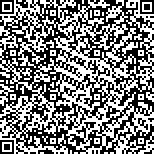| This article has been:Browse 2172Times Download 2311Times |

scan it! |
|
|
| DOI:10.13522/j.cnki.ggps.20180641 |
|
| Effects of Different Deficit Irrigation Modes on Grain Yield and Water Use Efficiency of Winter Wheat |
|
MA Shouchen, ZHANG Weiqiang, DUAN Aiwang
|
|
1.Farmland Irrigation Research Institute, Chinese Academy of Agricultural Sciences/Key Lab for Crop Water Requirement and Regulation of Ministry of Agriculture, Xinxiang 453002, China; 2. Field Scientific Observation and Research Base of Land Use, Ministry of Land and Resources, Henan Polytechnic University, Jiaozuo 454000, China
|
| Abstract: |
| 【Objective】The objective is to optimize suitable wheat water-saving irrigation mode. 【Method】By using field plot experiment, traditional?water?mode (plant was irrigated at over wintering stage, jointing stage and flowering stage) was used as the control (CK), 3 different deficit irrigation modes were set: plant was irrigated only at jointing and flowering stage (T1), alternate furrow irrigation was carried out at jointing and flowering stage (T2), and alternate furrow irrigation was carried out at jointing stage, booting stage and flowering stage (T3). Photosynthesis, transpirationandinterplant evaporation, were measured at jointing and flowering stages, dry matter accumulation and transfer, grain yield and water use efficiency of wheat were measured at maturity.【Result】The photosynthetic rate of wheat in T1 was similar to that of CK, but the transpiration rate was significantly lower than that of CK. In T2 and T3, photosynthetic rate of wheat indry and wet area were similar to that of CK, but the transpiration rate of wheat in dry area was significantly lower than that in CK and wet area. The soil evaporation amount of T1, T2and T3 was significantly lower than that of CK. The soil evaporation amount of dry area in T2 and T3 was significantly lower than that of wet area. The amount of dry matter accumulation after flowering increased, but the amount of dry matter transfer before flowering decreased in T1. The dry matter accumulation of wheat in wet areas of T2 and T3 was higher than that of CK, but the dry matter transfer was lower than that of CK. The dry matter accumulation of wheat in dry areas of T2 and T3was lower than that of CK, but the dry matter transfer was higher than that of CK. There was no significant effect on wheat yield in T1, T2 and T3, but both irrigation water and crop water consumption were significantly reduced.【Conclusion】 Our experimental results showed that 3 different deficit irrigation modes significantly improved the irrigation water use efficiency and water use efficiency of wheat. |
| Key words: winter wheat; irrigation model; deficient irrigation; water use efficiency |
|
|